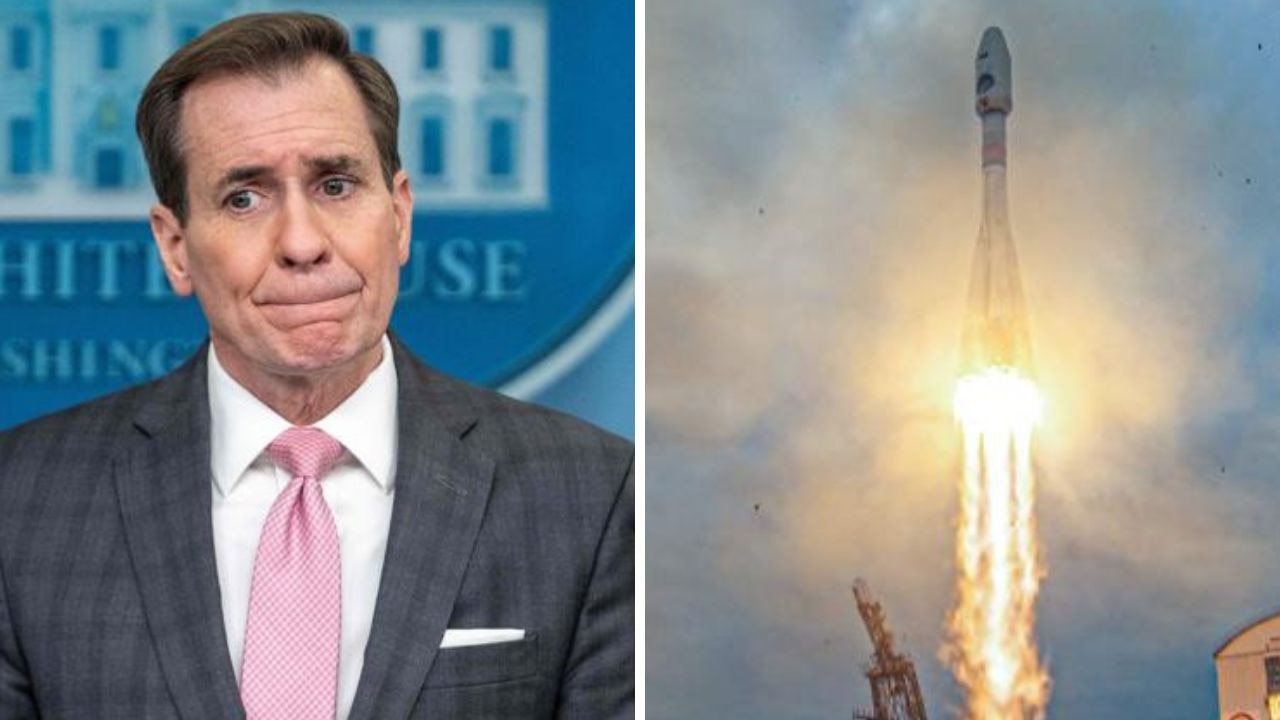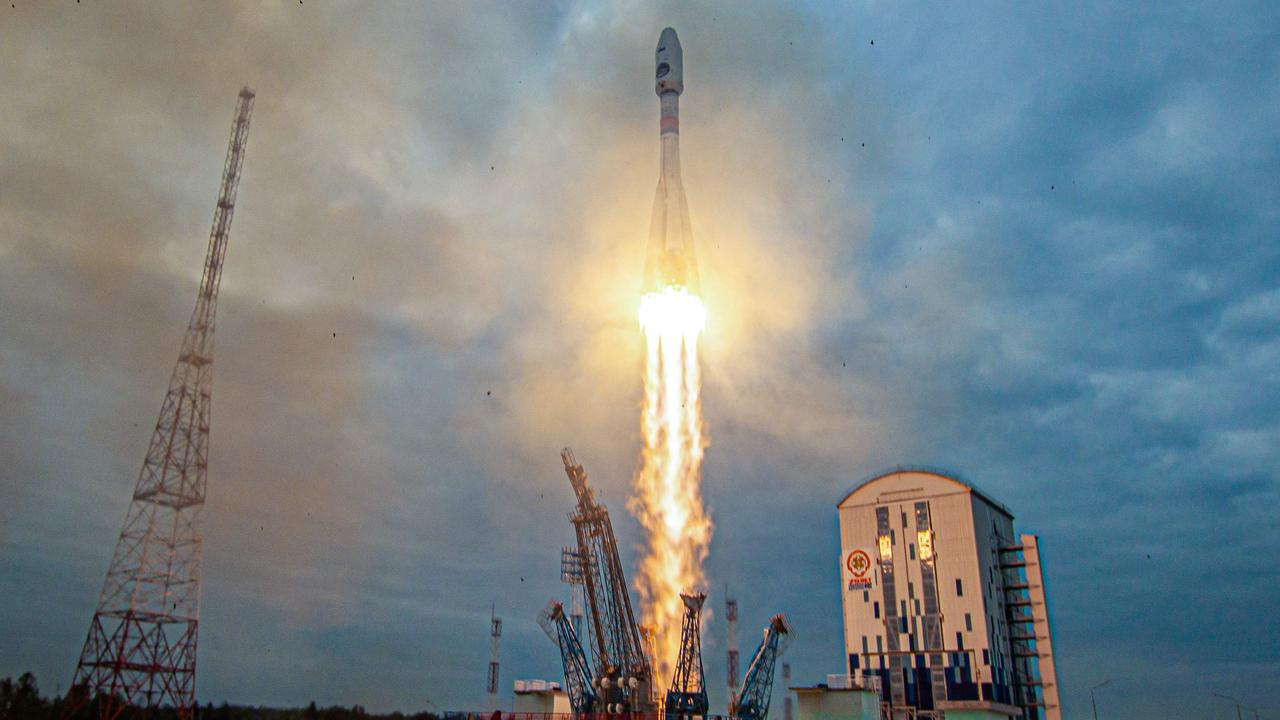Space war threat as Russia developing ‘troubling’ anti-satellite weapon
Russia looks set to be on the brink of launching a new type of war and the reality of what that means is terrifying.

Washington was sent into a spin on Thursday when the US House Intelligence Committee Chairman made an urgent plea for intelligence regarding an unspecified “national security threat” to be made public.
Ohio Republican Representative Mike Turner’s action ignited a firestorm of speculation.
Attention quickly focused on the launch of a secret Russian satellite on February 9. Was Soyuz-2-1V some kind of orbital nuclear weapon?

On Friday, White House National Security Council spokesman John Kirby stepped up to the podium. He confirmed that the buzz was about an orbital weapon.
“This is not an active capability that has been deployed,” he reassured the press gallery at a White House briefing. “And though Russia’s pursuit of this particular capability is troubling, there is no immediate threat to anyone’s safety. You’re not talking about a weapon that can be used to attack human beings or cause physical destruction here on Earth.”
But he took pains to emphasise it is a severe threat.
“I don’t want to minimise the potential here for disruption,” he said. “It could affect services here on Earth. There’s no question about that.”

No further details were released.
But the threat of war in space has been escalating for decades.
Anti-satellite missiles have been tested. Satellite “orbital inspectors” capable of grappling with other satellites are already active. And there’s a multitude of unexplained manoeuvring objects – some previously thought to be space junk – showing up on the world’s new network of commercial space-traffic control radars.
But space war is not like Earth war.
Dead satellites and debris can stay up there for tens or thousands of years. And every time one thing hits another, it just makes the matter worse.
Nukes in space?
“I am requesting that President Biden declassify all information relating to this threat so that Congress, the Administration, and our allies can openly discuss the actions necessary to respond to this threat,” Congressman Turner appealed.
Internet banking, GPS maps, global communications – all depend on satellites. Then there’s the likes of weather data, disaster-relief mapping – and early warning of the launch of nuclear missiles.
So what threat could Kirby have been referring to?
His reference to the 1967 Outer Space Treaty is a clue.
This specifically outlaws orbital “nuclear weapons or any other kinds of weapons of mass destruction”.
That includes orbital bombardment weapons – where warheads are stored aboard satellites for use against ground-based targets.
But the 1967 Outer Space Treaty can also be interpreted as banning anti-satellite weapons.
Its overarching preamble in Article 1, Paragraph 1 specifies “no new use of space for a military objective” and that all nations “must use outer space for the benefit and in the interest of all countries”.
If the new Russian threat is ‘nuclear powered’, that does not breach the nuclear component of the treaty. But it does represent a giant leap forward in Russia’s ability to conduct and sustain deliberate orbital interference, jamming – and potentially destructive – operations.
Global fallout
Much of the speculation about Congressman Turner’s warning has focused on a potential orbital weapon of mass destruction.
Russia is believed to be building a satellite to carry a tiny nuclear warhead. Its detonation would be optimised to produce a flash of electromagnetic radiation.

The direct effect of such a radioactive pulse is to overload the delicate circuitry of all electronics within its direct line of sight, causing them to instantly short out.
An indirect – and more concerning – effect is to “pump” this electromagnetic radiation into the Earth’s Van Allen belts. These are the Earth’s magnetic fields. They naturally capture supercharged particles from the Sun, funnelling them towards the north and south poles before they reach the planet’s surface.
We see them as aurora.
But an electromagnetic pulse (EMP) will give these fields an enormous injection of highly energetic electrons and neutrons. And that giant radiation cloud can linger for weeks, or even months – potentially killing most of the electronics that passes through it.
We’ve seen its like once before.
In 1962, the US detonated Starfish Prime – a large 1.4 megaton warhead – some 400km above the Pacific Ocean.
It generated a geomagnetic storm that destroyed satellites within line of sight. It also triggered power failures in Honolulu – some 2000km away. And that was in the era of more robust analog technology. And when the total number of satellites was in the dozens, not thousands.

In 2017, North Korea threatened to detonate a similar device over the United States. That would immediately plunge the entire US into darkness, destroying even the “spares” needed to repair the national electricity grid.
Unseen conflict overhead
Russia and China have been rapidly deploying a host of potentially anti-satellite capabilities in recent years.
Orbital satellite “inspectors” have proven capable of moving close alongside others.
That could be a good thing if used to repair, refuel or haul down to Earth dead satellites that threaten orbital navigation.
But unwanted proximity can be a problem, says US Space Force Brigadier General Todd Moore.
“I can get close to you to inspect you, I can approach you on the street and get close to you to look at your haircut, but that’s not the only thing I can do when I get close,” he says. “In a peacetime scenario, if you knew my intent, you’d have no concerns. If my intent is unknown, you’d have reason for concern.”
Nearby satellites can jam electronic equipment, blind optical equipment, or degrade sensors with chemical sprays. Another option is to grapple them with robotic arms.
Western military and commercial space-tracking agencies have been scrambling to identify and track Russian and Chinese “orbital inspectors”, some of which appear to have been pretending to be space junk.
And at the back of everybody’s mind is the potential fallout of a space-based war.
Russia destroyed a satellite in 2021 to demonstrate it could do so. Ground-based radars tracked 1783 fragments speeding outward at more than 28,000km/h. Thousands more were too small to detect.
Each and every one has the potential to seriously damage or destroy a space craft or space station. And where a bullet falls to the ground after a few seconds of flight, orbital flechettes can remain a threat for thousands of years.
China did the same in 2007. India in 2018. The US test-fired its first anti-satellite weapon in 1957 and its last in 1985. It signed a test-ban treaty in 2022.
Jamie Seidel is a freelance writer | @JamieSeidel






